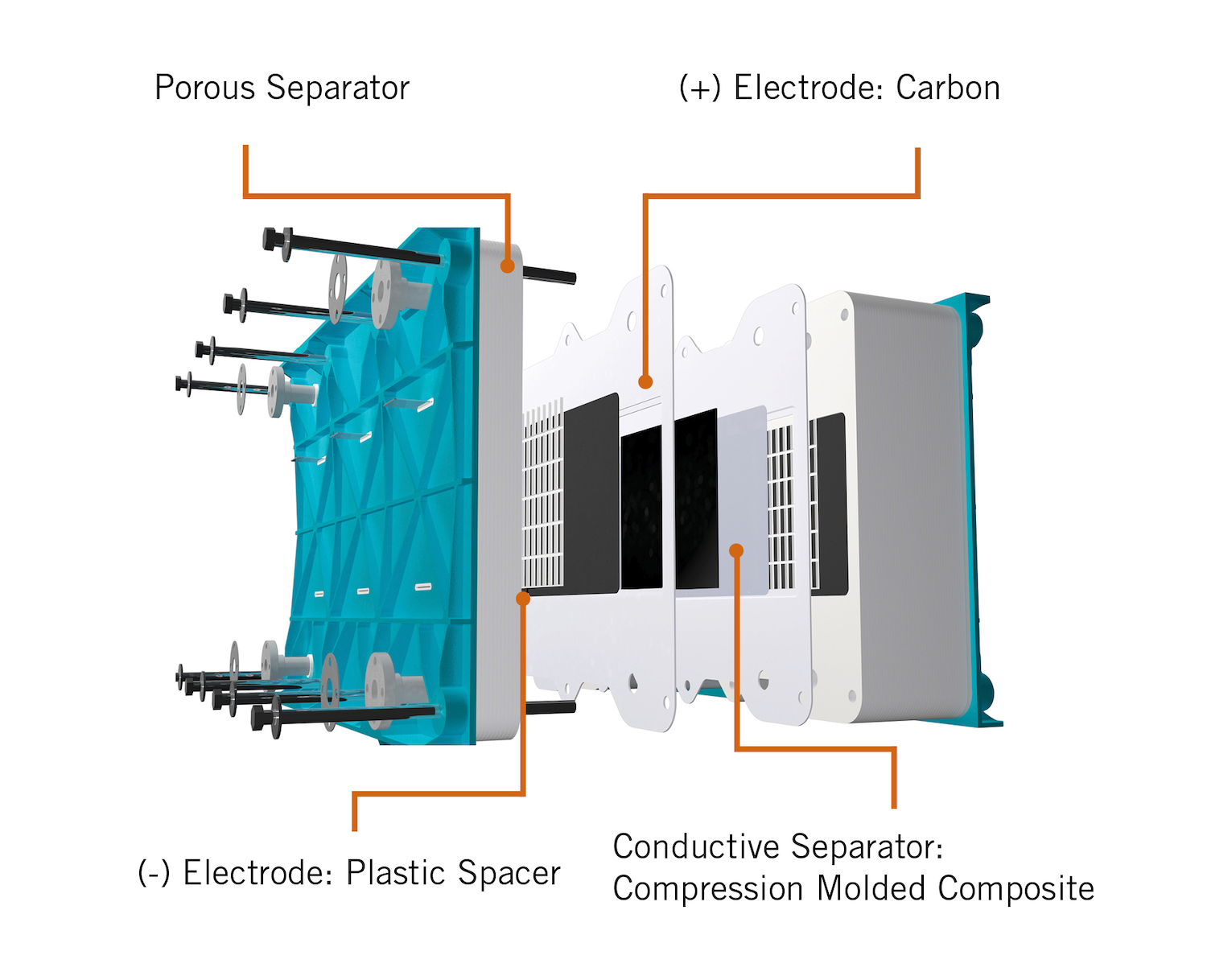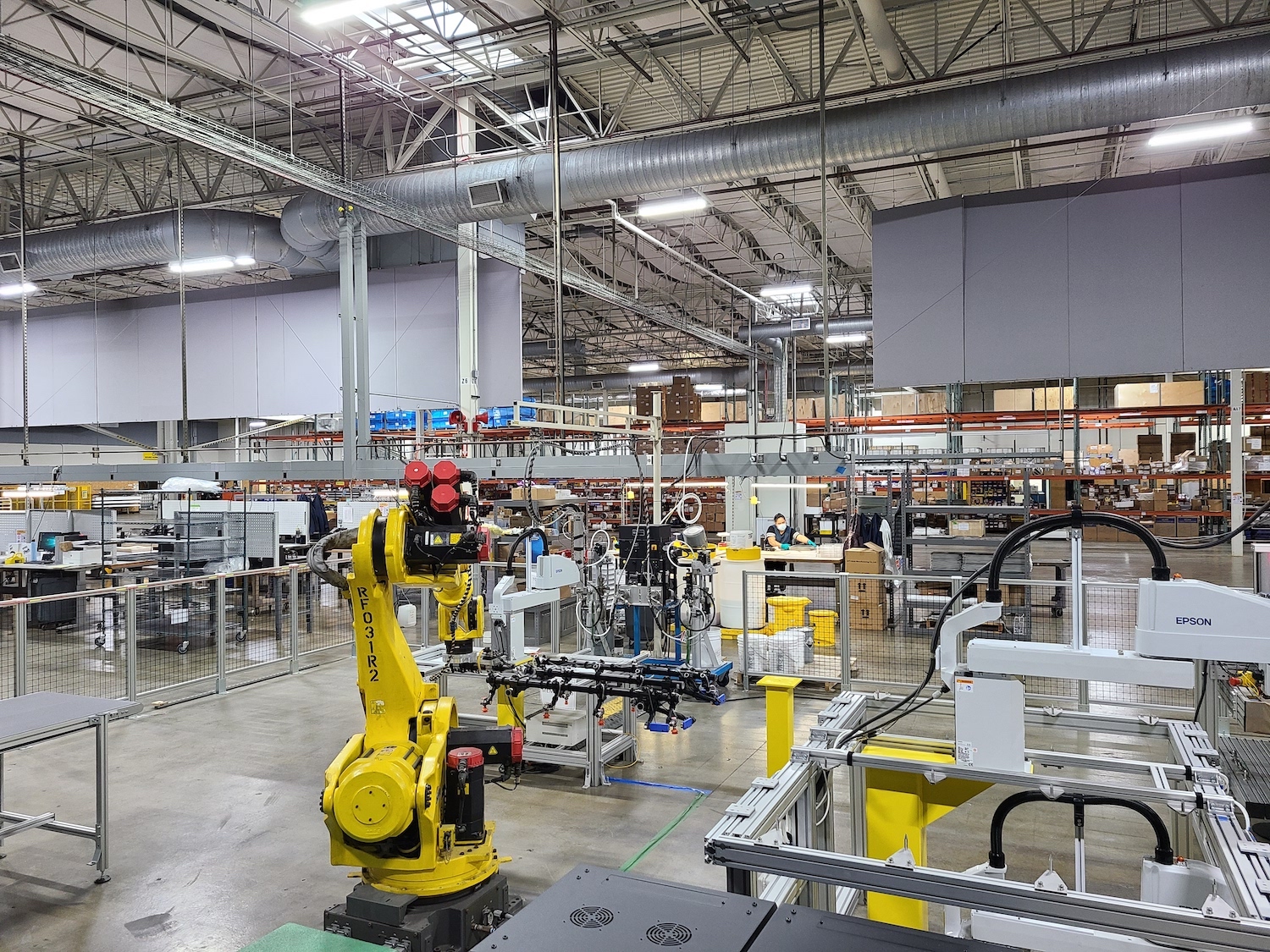
The ESS Energy Warehouse is a utility-scale iron flow battery system enclosed in a 40-foot steel shipping container.
Energy storage is the key to unlocking Earth’s vast wind and solar energy resources, but limitations associated with lithium-ion batteries, the technology of choice to date, are driving demand for alternatives. Li-ion technology is facing new challenges in its supply chain in addition to well-known operational constraints, safety risks and environmental impacts. While Li-ion batteries can be a good option for relatively short-duration storage applications, innovative new offerings, such as the utility-scale iron flow batteries produced by the energy storage firm ESS, provide more environmentally sustainable solutions that are able to store and deploy clean energy over longer durations built on a streamlined, plug-and-play platform.
Long-duration energy storage and the flow battery advantage
Li-ion batteries are long-lasting when used in small devices, but large-scale Li-ion installations, such as those capable of powering the grid or other large energy users, typically only provide power for a few hours. That is sufficient in some cases, but there are many more instances in which energy storage technologies capable of delivering power for 10 hours or more could provide utilities and large-scale energy users with needed flexibility and control over their power supply. In addition, these long-duration technologies can serve as emergency back-up over extended periods and accelerate the adoption of wind and solar resources, reducing or eliminating the need to construct new fossil power plants.
Flow batteries are a type of long-duration technology that has begun to challenge Li-ion in the energy storage space. As the name suggests, flow batteries leverage the ability of fluids (electrolytes) to store electricity when they flow through the system in one direction and release it again when they flow in the reverse direction.
One leading appeal of the technology is its simplicity. The bulk of a flow battery system consists of tanks which can be scaled up or down according to needed duration. In addition, the electrolytes used in typical flow batteries are non-flammable and non-toxic, making the battery systems safe and environmentally benign. Unlike Li-ion technology, flow batteries can also be taken out of service and started up again quickly, even after sitting dormant for long periods. That provides energy managers with a higher degree of flexibility and responsiveness to demand.
Flow batteries are not new, but early iterations of the technology were bulky and inefficient. Recent advances in materials science have provided innovators with new opportunities to improve efficiency and develop more effective, energy-dense systems.

A new twist on the old flow battery
Conventional flow batteries utilize two electrolyte solutions separated by a specialized membrane. A unique feature of the system developed by ESS is that the same base material (iron chloride) is used for both electrolytes.
When the ESS battery charges, iron dissolved in the electrolyte is turned into metallic form and adheres to carbon plates, which act as electrodes. The amount of energy that can be stored is equivalent to the surface area of each plate times the thickness of the iron plating. To discharge the battery, the negative and positive terminals are simply reversed. That makes the iron dissolve back into the saltwater, as quickly as flipping on a light switch. The stored energy is available virtually in an instant.
ESS built its technology on previous research, with two key advances that provide for a closed-loop system that is easily recyclable and longer-lived.
One new element is a precisely engineered management system for the iron-to-carbon plating process, which enables thousands of charging cycles without degradation. The other improvement is the electrolyte, which is designed to be restored to its original condition with each charging cycle so it can be reused thousands of times.
The sustainable supply chain of the future
The environmental and social justice impacts of the fossil fuel industry are well known. Environmentally intensive extraction and refining practices disproportionately harm low-income communities and communities of color while the particulate and greenhouse gas emissions from fossil fuel combustion place many populations at risk, particularly those in low-lying areas more vulnerable to flooding and sea-level rise.
With a strong desire for more sustainable energy solutions, the impacts of the lithium supply chain are becoming increasingly apparent and include reliance upon critical minerals produced in politically unstable regions with poor environmental and human rights track records. When in use, Li-ion batteries pose fire risks, creating obstacles to safe siting and operation These challenges for the Li-ion battery field are surfacing as corporate sustainability planners increasingly seek cleaner, more ethical and lower-impact energy solutions.
ESS stands out in that its battery does not employ rare earth minerals or materials sourced from conflict areas. The main components of the system are domestically produced in the U.S., including plastic and fiberglass tanks, casings and pipes, along with off-the-shelf pumps and other electrical equipment, according to the company. Likewise, the iron salts and carbon plates are sourced from a number of domestic vendors.
The electrolyte solution is environmentally benign and nonflammable. When an ESS battery reaches the end of its life, the electrolyte can be easily recycled or dehydrated, and the salts can be transferred to public works agencies and other users.

A simple solution for utilities and energy managers
One ESS system, the Energy Warehouse, has been designed as a fully integrated, transportable, plug-and-play module enclosed in a 40-foot steel shipping container. This all-in-one approach relieves energy planners from having to develop complicated installation plans, and permits are relatively easy to acquire because the system is water-based and environmentally friendly.
Aside from ease of installation, ESS cites the operational simplicity of its iron flow battery, especially with regards to utility-scale operations.
“With Li-ion batteries for utilities, you get a big rule book of do's and don'ts to maximize life of battery without voiding the warranty or violating safety requirements,” said Hugh McDermott, senior vice president of business development and sales for ESS. “Lithium-ion systems have to be rested after charging, have to be discharged daily, there is a limit on the number of charges annually, and a limit on the rate of charge.”
In contrast, “there are no rules for the ESS system,” he explained. “It is more flexible as to charging and discharging. There are no rest periods, no cooling off, no worries about heat and safety, and no limit to yearly or lifetime cycling. With zero performance degradation, there is no need to replace modules in an eight- or 10-year time frame, no need to plan for battery pack replacement, and no need for a sensor system to track battery health.”
The bottom-line case for sustainable energy storage
The cost of the ESS system is similar to an equivalent Li-ion system while providing much longer duration and operating life. The ESS flow battery offers two to three times the usability of Li-ion systems, while lasting two to three times longer, McDermott said.
In addition, the ESS system relies on established industries for end-of-life recycling, enabling energy planners to factor those costs into consideration. In contrast, end-of-life costs for Li-ion systems are unknown because the Li-ion battery recycling industry is still in its infancy.
“The market is evolving and will continue to evolve, and an iron flow battery system you invest in today can be upgraded by adding more electrolyte at a low cost,” McDermott explained. Corporate planners and utility managers who make smart decisions about energy storage technology today will help ensure a strong foothold in the sustainable – and profitable – energy landscape of the future.
This article series is sponsored by ESS, Inc. and produced by the TriplePundit editorial team.
Images courtesy of ESS, Inc.

TriplePundit editors offer news and insights on sustainable business.














